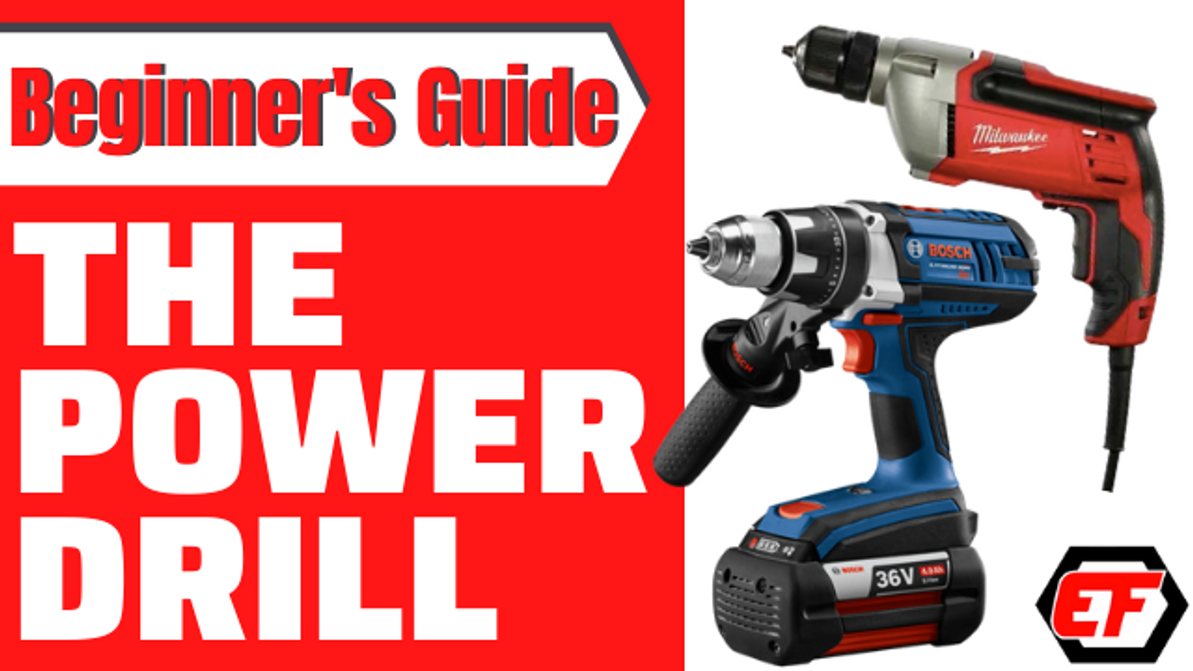Beginner's Guide to Tools: The Power Drill
The power drill. It seems so simple. Nearly EVERYONE has one, whether they use it often or not, it’s a must in any tool collection. It’s common amongst a variety of people: whether you’re a pro, a woodworking hobbyist, or just a homeowner that has it stashed in your “emergency repair kit” beside your dusty hot glue gun and multi-use pliers kit. Let’s all get on the same page: a power drill is extremely useful. Don’t get it twisted though, a power drill isn’t just a one-handed drill you use for putting together IKEA furniture. It can be used for quickly driving screws or making holes.
Power drills can be used for a variety of materials: wood, plastic, metal, concrete, glass, ceramic, and more. Of course, you can’t use the same drill and driving bits for all these materials, but the great thing is, there are thousands of types and sizes of bits out there, so chances are, there’s a bit to use for your material of choice.
How Does The Bit Stay In Place?
Now we’re going to discuss how the bit is held. Why? Well, this is a beginner’s guide so this is for the people that want to know the basics and that’s what we’re doing. Back to the question… the bit is held at the end of the drill shaft by a clamping device called a chuck. Chucks come two ways, either keyless or it requires a chuck key. Obviously, keyless is more convenient (you just stick in the bit and hand-tighten the clamp), but the chuck key tightens the clamp more securely, which minimizes the chance of bits slipping.
The Need For Speed
Like cars, drills come with various speed settings. There are drills with fixed speed settings or variable speed settings. Would you rather have a car with one speed or that can go faster or slower? Again like a car, the drills that offer variable speeds (go faster and slower depending on how hard you’re squeezing the trigger) are more convenient. Also, some drill or driving applications are done more accurately with the ability to use various speeds.
Corded or Cordless?
Power drills come both ways and the obvious difference is mobility. Corded drills limit you to move away from the power source by the length of the cord, or if you’re crafty, the length of the extension cords you’ve stacked up to further your distance. Cordless drills give you the freedom to run around and drill holes or drive screws any distance your heart desires, until the battery dies that is. The difference between the two runs deeper than mobility, they also differ in power, torque, and RPMS. Generally speaking, corded tools are more powerful than cordless due to having a continuous and larger power supply. Before purchasing a drill, what kind of projects will you be using it for and use that information to determine if you should go corded or cordless.
Different Types of Drills
Drills come in a variety of forms: hammer drills, impact drivers, and drill drivers, to name a few. Hammer drills are heavy duty - they can drill holes in to concrete because they use a “hammering” action to drill in masonry. Impact drivers are mainly used for driving screws, and a “tapping” motion that allows it to powerfully drive screws in many difficult materials. Drill drivers are engineered for both drilling and for driving screws. All three types have various modes and settings depending on the brand and model, look into these before you purchase.
There you have it, the beginners guide to power drills. Trust us, it doesn’t end here - we could go on forever, but we’re going to end here for now. If you already know the basics of a power drill and are wondering if you need both a drill and an impact driver, check out our blog post: Drill vs. Impact Driver: Do You Need Both? Have you checked out Edmonton Fasteners power drill products? We offer tons of models by Milwaukee, Makita, Bosch, and Dewalt at the best prices. Thank you for stopping by and we’ll catch you in our next post!
Recent Posts
-
Bissett is Universally Compatible, See Why and How
With Bissett's over 600 fasteners, you're bound to find the perfect fastener for your tool. You …2021 Mar 16th -
How To Choose Safety Gloves
We love healthy hands at Edmonton Fasteners. We’re not a skincare shop (clearly) but we d …2021 Mar 8th -
Three Easy Home Fixes with Gorilla Glue
Gorilla Glue is a household name because of one reason: it works. We carry Gorilla Glue at Edmo …2021 Feb 2nd





